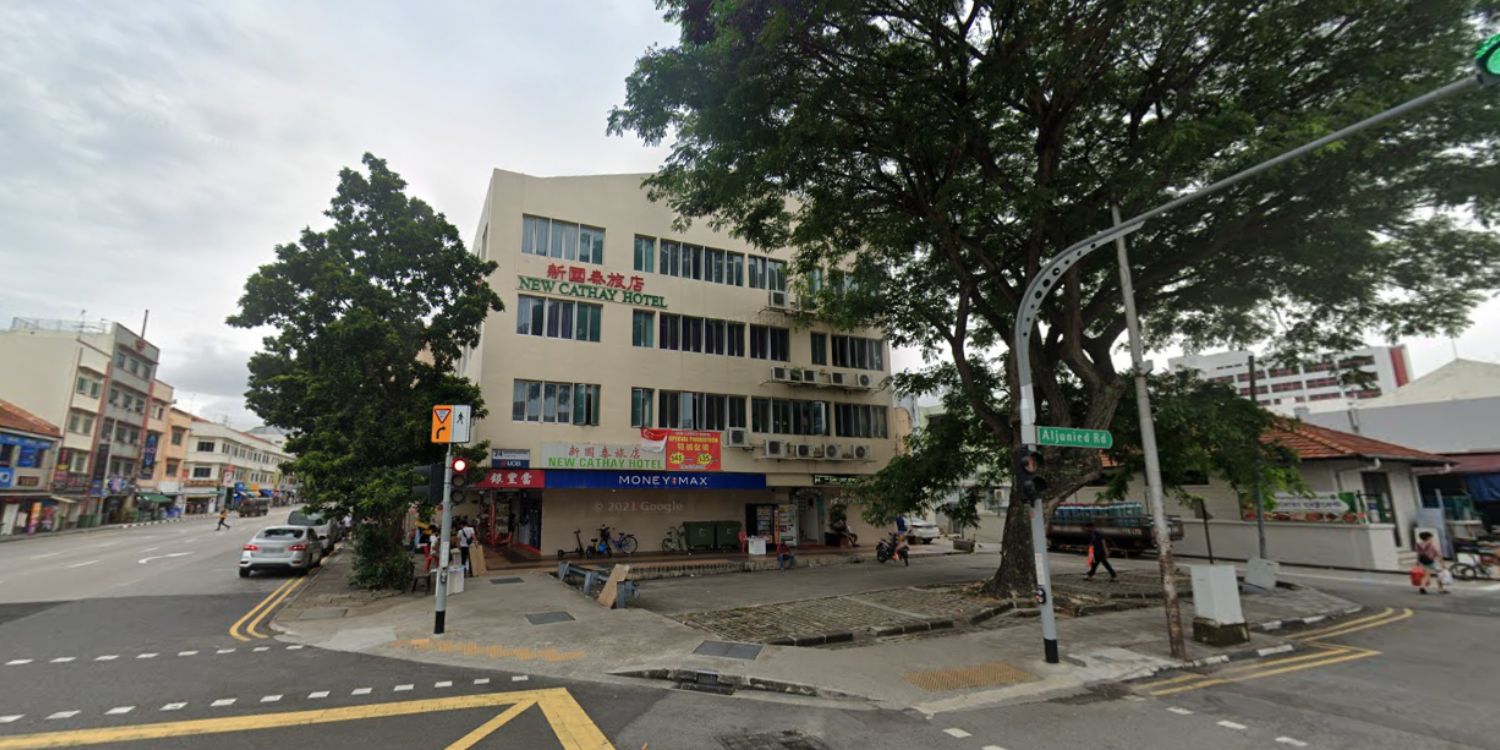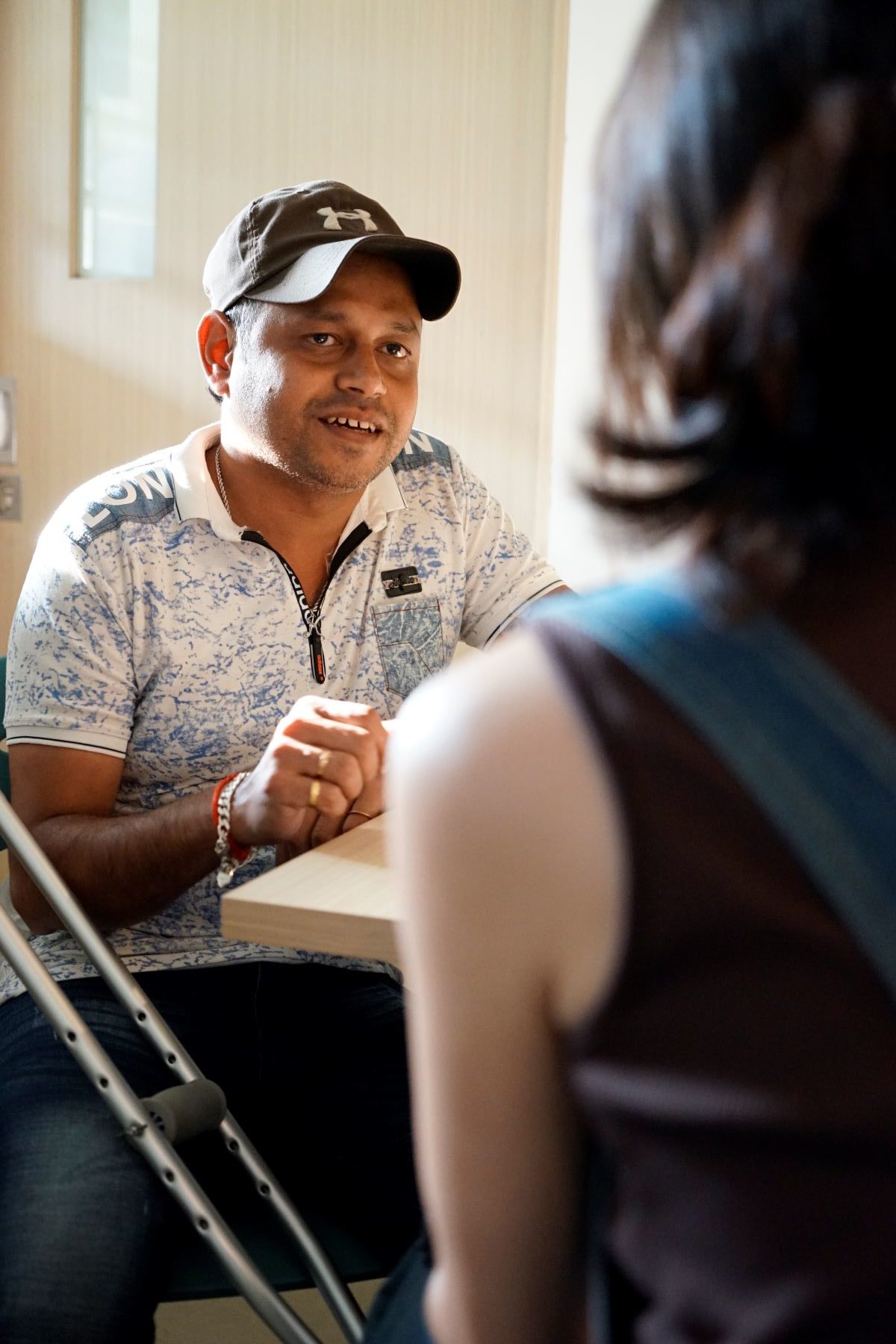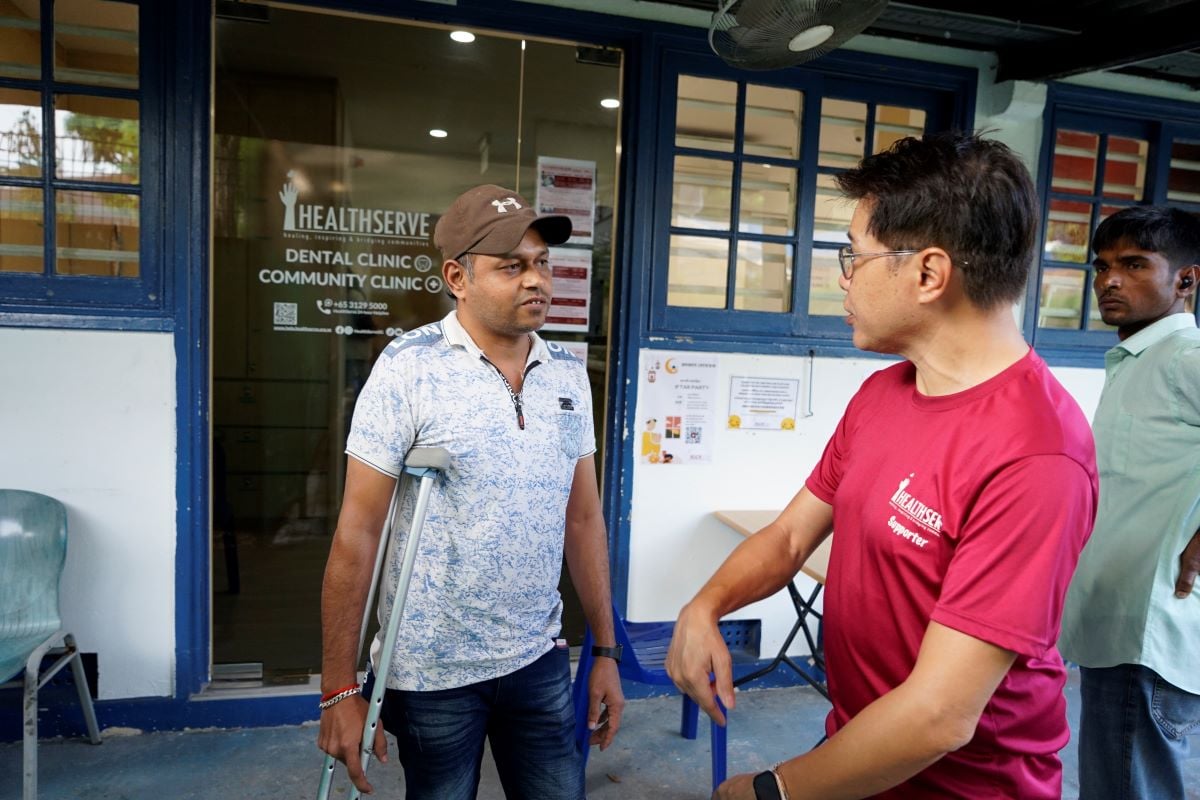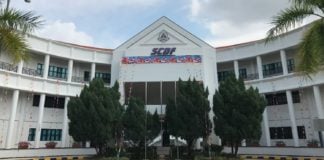What living in Geylang is like for a migrant worker from Bangladesh
Cold air greets me as “Brother Roy” opens the door to his room.
Natural light pours in from a few small windows overlooking the street, and pushed against the length of the wall are two queen beds with clean, white sheets.
“Brother Roy”, as his friends like to call him, gets daily housekeeping you see, so the room is pretty much in order.
I had felt a little on edge climbing up the dim, narrow staircase of the New Cathay Hotel. After all, what would a 29-year-old woman be doing in a budget hotel room in Geylang on a Saturday afternoon?

Source: Flow
While I felt out of place there, the 37-year-old migrant worker from Bangladesh, Roy Kartik, has called this building home for the past two years.
Migrant worker lives with roommates in Geylang hotel
Roy came to Singapore in 2015 and is one of the few migrant workers in Singapore who do not live in a workers’ dormitory.
According to the Straits Times (ST), there are 53 purpose-built dormitories (PBDs) with a total of 256,000 beds in Singapore.
But dormitories are reaching full capacity, and rentals are rising amid the bed crunch.
The situation has prompted employers to consider alternative housing such as HDB estates or in Roy’s case, a budget hotel.
He has been living in a second-floor room of the New Cathay Hotel since 2022.
Located at the busy junction of Aljunied Road and Geylang Road, the two-star hotel is nothing more than a plain three-story walk-up.

Source: Google
I first met him at the ground floor of the hotel on a sweltering Saturday afternoon. He was dressed casually and sensibly for the 34°C weather, but what stood out was the accessory he had in one arm — a crutch to support one side of his body.
Turns out, he had injured his left leg in a work accident last year. While transporting 10 packets of raw cement, the trolley he had been manoeuvring tipped over — crushing his leg in the process.
“At first [I felt] no pain,” he recounted. It was only in the ambulance that the severity of his injury set in. He had broken his lower leg and needed surgery.
Nine months later, he continues his recovery process in a room in Geylang — alongside three other workers.
Some semblance of home in New Cathay Hotel room
When “Brother Roy” brought me up New Cathay Hotel’s stairwell, I was more concerned about his comfort than the glances that came my way.
We stopped periodically to let the other hotel residents through as he gingerly navigated the steps with his one good leg.
About 10 minutes later, we arrived at his room, and well, it’s what you’d expect of a budget hotel — tiled floors, a wooden wardrobe that’s seen better days, two neatly made queen beds.
But in the far corner of the room, I spotted a tear-away calendar (those old-school ones that Singaporeans have in their houses) hanging on a 3m hook.
The room’s occupants had also used copious amounts of masking tape to secure these hooks. Relatable, I said to myself, as I recounted all the times I wanted to do the same in my own rental home.
Also relatable: The pile of clothes on top of a stool.
Like Roy, I, too, share a house with three other people, but am fortunate enough to have my personal space.
Here in Geylang, four grown men have to share double beds every night.
Geylang room is an upgrade for migrant worker
To Roy, this room is an upgrade from what he had previously.
As a young man new to Singapore, he had been housed in a HDB flat at Geylang Bahru where 11 people shared two bedrooms.
“This [room] is better,” he said. The arrangement is also more ethical.
The Ministry of Manpower (MOM) has warned employers to ensure that their workers’ living quarters are not overcrowded.
“The total number of occupants a HDB unit is allowed to house is dependent on the flat size,” said the ministry in a housing checklist for employers. The maximum occupancy for the varying flat sizes is as such:
- 1-room and 2-rooms: 4 occupants
- 3-rooms: 6 occupants
- 4-rooms and above, including Executive: 6 occupants
Employers and individuals who do not adhere to the conditions may be persecuted in court.
Such was the case in 2018 when 53-year-old Zhou Fengxing was charged for allowing an employer to house 21 foreign workers in one Geylang unit.
MOM had found illegal partitions within the unit and unsanitary conditions, which compromised the well-being of the workers.

Image for illustration purposes only.
Under the Employment of Foreign Manpower Act (EFMA), employers, property owners, and tenants are kept accountable for errant behaviour.
Migrant workers living in less-than-ideal conditions can find support in the Migrant Workers’ Centre as well as MOM.
Luckily for Roy, those days of living with more than 10 others are in the past.
He lives in relative comfort now, though his injury has thrown a spanner into his daily life.
‘My days are never-ending,’ says migrant worker living in Geylang
Nowadays, Roy wakes up at 9am, and spends his time walking around the neighbourhood and talking to his family back home.
Just last week, he limped to the National Stadium — a journey that took him over two hours — but that’s the extent of his entertainment.
With his injury, he can no longer do menial work and is only in Singapore to make a full recovery.
He has no intention to continue working here, and plans to return home to his family.

Photo courtesy of HealthServe.
He beams as he shows me a picture of his daughter, a bright-eyed two-year-old who is now in Bangladesh with his wife and parents.
“My parents and my wife said, no money it’s okay, just come back,” he said.
For him, perhaps his time in Singapore has come to a natural end.
Roy now gets support from HealthServe, a charity supporting migrant workers in Singapore, while he recuperates.
Apart from receiving medical care at its GP clinic in Geylang, the charity also provides emotional support to injured workers through activities and outings.
To top it all off, Roy gets free meals via HealthServe’s Food Project, phone and transport top-ups, and grocery support.
Migrant brothers get hope & healing from Singapore charity
Growing up in Singapore, I’ve heard tall tales of Geylang.
The media paints the neighbourhood as one filled with drugs, prostitution, and other vices — Singapore’s “problem child”, if I could call it that.
In 2014, ST reported that those in Geylang “speak of an undercurrent of fear”. The report came after public concerns following the Little India riot in December 2013.
Then-Commissioner of Police Ng Joo Hee said at the time that “there exists a hint of lawlessness in Geylang”. To say that this is an exaggeration may be unfair.
Walking the back alleys of Geylang more than a decade later, I saw used needles and empty medicine bottles. Not forgetting the brothels, some of which had upgraded their shop fronts with neon signs.
However, these establishments exist alongside pockets of hope, and HealthServe’s compound is one of them.

Photo courtesy of HealthServe.
For a migrant worker living in Geylang like Roy, HealthServe is a stone’s throw away.
Housed in what used to be an old primary school, HealthServe is a much-appreciated resource, providing subsidised medical and dental care as well as specialist consultations and rehabilitation services for low-wage migrant workers.
Patients only pay a flat fee of S$8 for acute conditions, and S$15 for chronic disease care and dental services. These fees are for both consultation and medication.
In 2022, the charity engaged 30,000 migrant workers and hopes to do even more.
This March, HealthServe is holding its third virtual run, #InTheirShoes24, to raise funds for low-wage migrant workers.
These funds will go towards providing healthcare services to “brothers” in need. The charity has raised S$56,000 so far on Giving.sg.
Geylang is more than just Singapore’s red-light district
As I walked the streets of Geylang among the construction sounds of new condominiums being built, I wondered how long more it can retain its reputation as Singapore’s “underbelly”.
Diving into the “unseen” areas of Geylang, such as Roy’s unexpected room in a budget hotel, made me reconsider my assumptions about Geylang.
Vice still exists despite increased surveillance, police patrols, and occasional raids, but the area is more than its gritty facade.
Geylang is also home to both Singaporeans and migrant workers like “Brother Roy”, who is there not out of choice. Even higher-paid expats are voluntarily moving into the area.
On my personal apartment hunt last year, Geylang was not out of the question despite the area’s sketchy reputation.
But as the universe would have it, I ended up moving elsewhere.
Within the property circles, there’s wind that Geylang will be the property hotspot in the future, with its proximity to bustling Paya Lebar among other factors.
Just like how Bugis was Singapore’s red-light district in the 1950s, Geylang may just see a major clean-up in the years to come.
It’s a pity that this colourful area might no longer exist as it is — but I do not doubt that whispers of it will continue to live in the minds of the residents, Singaporean or not.
Also read: Migrant Workers In S’pore Get Free Coldplay Tickets, Enjoy Concert With Volunteers
Migrant Workers In S’pore Get Free Coldplay Tickets, Enjoy Concert With Volunteers
Have news you must share? Get in touch with us via email at news@mustsharenews.com.
Featured image adapted from Google and courtesy of HealthServe.

Drop us your email so you won't miss the latest news.









